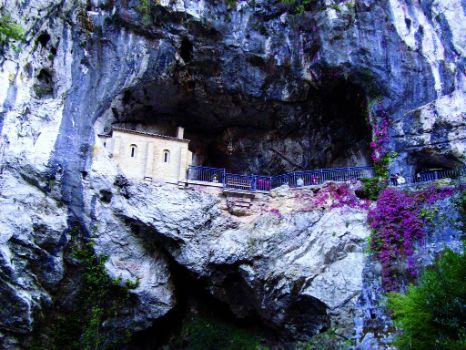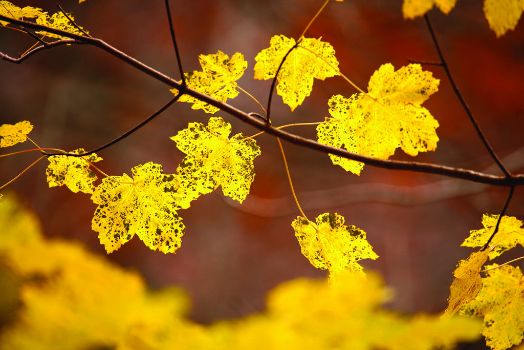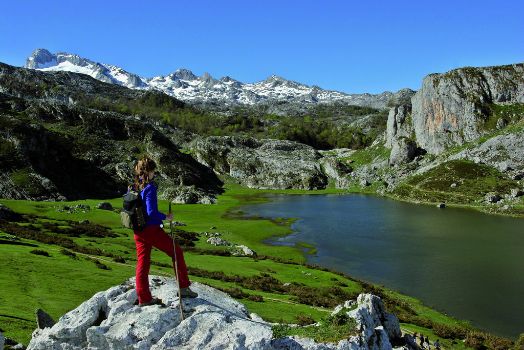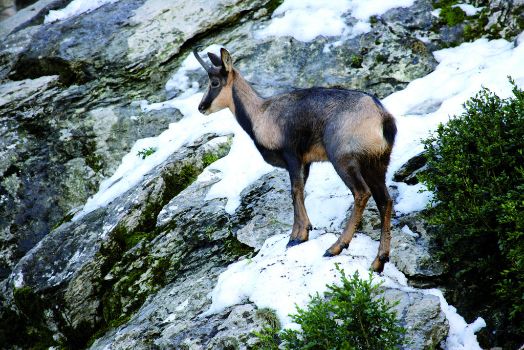Net of Natural
Trails

Muñigo - Covadonga Nature Trail
Description
The Cradle of Los Picos de Europa National Park
The history of this protected area begins on July 22, 1918, when the eastern massif of this mountain range was declared as Montaña de Covadonga National Park. Its name was changed on May 30, 1995, when the area covered was expanded to 64,660 ha, and became part of the National Park Network. In 2003, it was declared a UNESCO Biosphere Reserve.

This Nature Trail begins before the wooden walkay that crosses over N-262 road. From this point, the route climbs up a hill covered with broom and gorse (Ulex sp.). It continues on flat terrain until it ventures into a vast forest of chestnuts (Castanea sativa), birches (Betula sp.) and maples (Acer campestre).
To the left lies La Cruz de Priena, a 700-metre hill and vantage point from where one can see the sea, Sueve, Arriondas, Cangas, Covadonga, the road to the lakes and the highest peaks in these valleys.
A gentle slope rises from the forest, past a traditional stable and a meadow, where beech (Fagus sylvatica) is increasingly more common. Gradually, the road ventures deeper into Picos de Europa National Park, drifting slowly through the trees around the Monastery of San Pedro, and the towers of the Basilica of Santa María la Real. The route ends in western part of the Covadonga monumental complex, located in an exceptionally beautiful setting.
Sites of interest
Profile
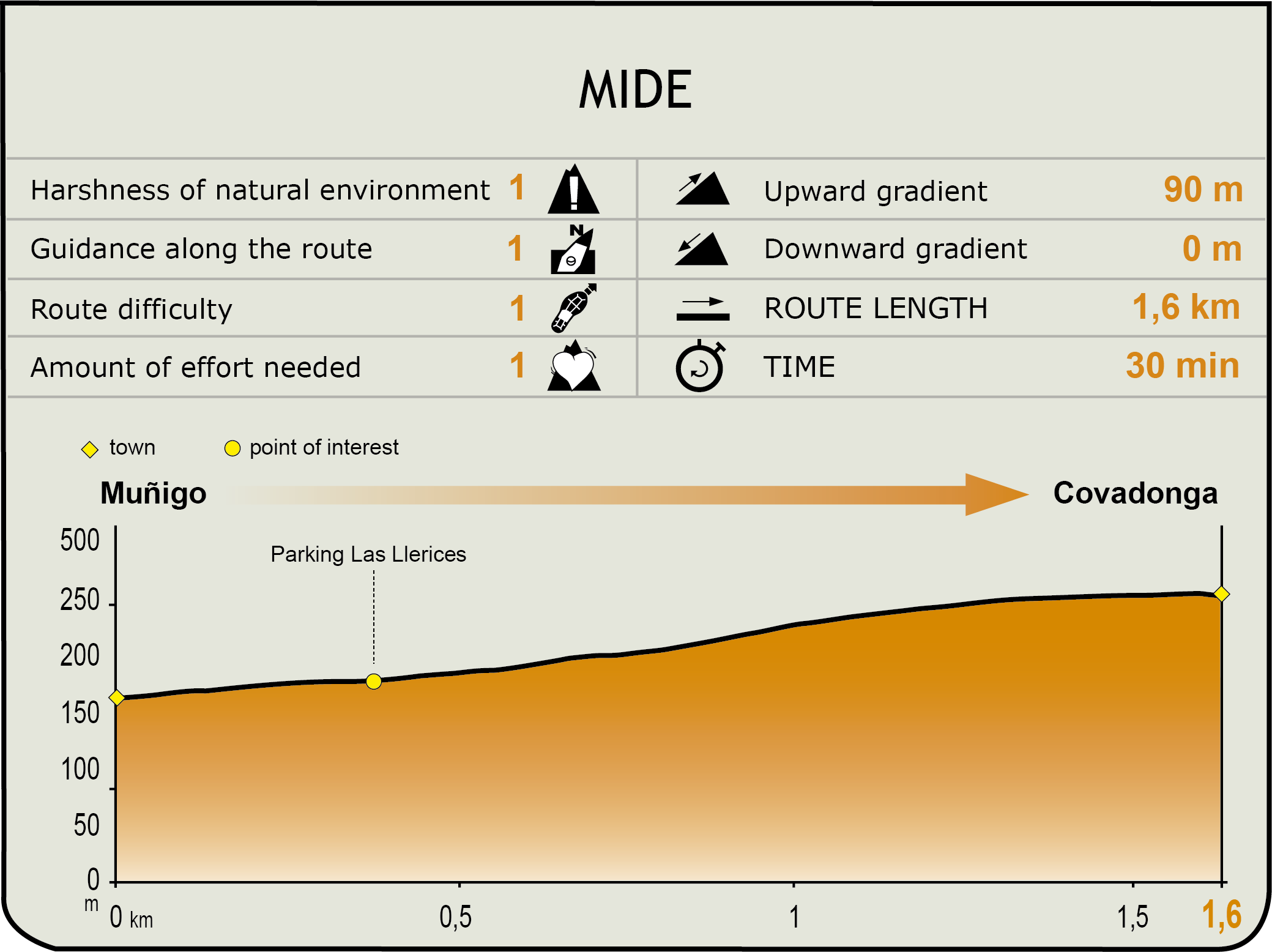
Highlights
Further information
Picos de Europa National Park
This protected territory, located in the largest limestone formation on the European Atlantic coast, has an Atlantic forest ecosystem. The karst geology has produced an impressive landscape dotted with caves, canyons and chasms of over 1,000 m. The lakes in the summit are the only legacy of the glacier erosion, which also had a significant impact on the landscape.
While the cliffs are populated by elusive species, including the chamois (Rupicapra rupicapra), the abundant forests in the area play host to roe deer (Capreolus capreolus), chamois and wolves (Canis lupus) and an occasional bear (Ursus arctos).
Picos de Europa National Park is home to more than a hundred bird species, including the Black Woodpecker (Dryocopus martius) and the endangered Cantabrian capercaillie (Tetrao urogallus). Large raptors also inhabit the area, including the Griffon Vulture (Gyps fulvus) and Golden Eagle (Aquila chrysaetos), which can be seen flying over this unique landscape, rich in legends, traditions and histories.
Real Sitio de Covadonga
Covadonga, or Cuadonga in Asturian, is a parish in Cangas de Onis County, within the protected territory of Picos de Europa National Park. The sanctuary built in honour of the Madonna to commemorate the defeat of the Muslim army in 722 at the Battle of Covadonga stands her.
Worthy of note in this monumental complex, the most visited of Asturias, is the "Santa Cueva", where, according to tradition, the Christian army took refuge during the battle that initiated the "Reconquista". It now houses the chapel-tabernacle with the image of the "Santina", Our Lady of Covadonga, and the tomb of Don Pelayo.
Another must-see monument is the neo-Romanesque Basilica of Santa María La Real, designed by Robert Frassinelli, and built between 1877 and 1901, by the architect Federico Aparici, in pink limestone.
Near the Monastery of San Pedro, on the Basilica's esplanade, are the Chapter House and a bronze statue of Don Pelayo, created by the sculptor Eduardo Zaragoza in 1964.
Other interesting feature is "La Campanona", a 3-metre tall bell that weighs 4,000 kg. It was built in 1900 at La Felguera by the Italian sculptor Sortini. This work, donated by Count Sizzo-Norice and Luis Gómez-Herrero, was awarded the first prize at the Universal Exhibition in Paris. The obelisk, which contains a replica of the Victoria Cross, was erected in 1857 by the Dukes of Montpensier in the place known as "El Repelao", where according to tradition King Pelayo was crowned.



